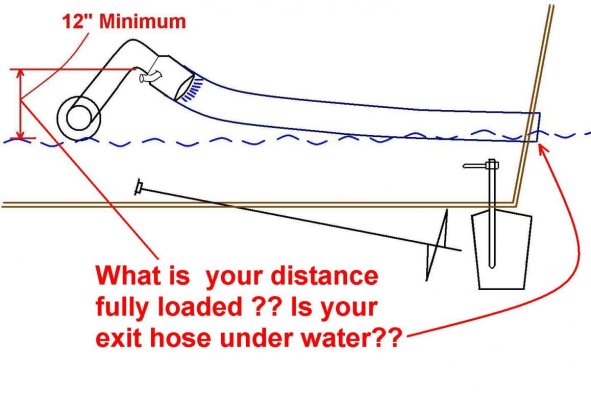I can't speak specifically about the twins, but in pictures I have seen the exhaust geometry is similar to the single. And many surveyors don't pay much attention (just like boat builders) to this problem.
Here is what you can do to check it yourself:
Look at the mixer- the stainless steel device where raw water mixes with the exhaust. It has an internal space where raw water enters and mixes with the exhaust at the end near the hose connection. Visualize what happens when the engine shuts down. Unless the mixer is oriented properly, the jacket will retain water. This will increase corrosion and if it ultimately fails inside, that water will run back into your turbo.
The other issue is height. Look at the height of the lower wall of the exhaust gas loop- the spill over point. That height should be at least 12" above the water line. You can easily find the water line by opening the strainer and noting the water height and compare it to the "spill over point".
The attached pic describes this graphically.
With the single, I cruise at 14-15 kts at 2,800 rpm and max out at about 19 kts at 3,300 rpm. The Yanmar twins are higher rpm engines- 3,800 max and should cruise at 16 kts at 3,200 rpm and max out a bit over 20 at 3,800.
It should burn about 15 gph at 16 kts cruise speed.
David

